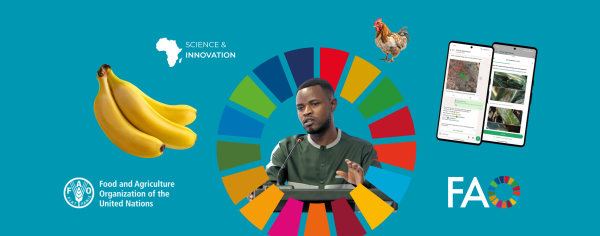Agrifood systems in Africa are experiencing a seismic shift, and it’s all thanks to homegrown innovation. Forget the image of a continent reliant on external solutions. Local entrepreneurs and researchers are stepping up, leveraging their deep understanding of the land and its challenges to drive real change. We’re talking increased productivity, greater resilience, and a more sustainable approach to feeding the continent. And honestly, isn’t that what we all want? Let’s dive into how this transformation is unfolding.
The Rise of Agri-Tech Solutions
Technology is playing a massive role. It’s like, you can’t escape it, but in this case, that’s a good thing. From simple mobile apps to sophisticated data analytics, agri-tech is empowering farmers in ways previously unimaginable. And I mean, seriously, who would have thought?
Mobile Technology and Market Access
Think about it: How many farmers struggle to find the best prices for their produce or even just to connect with buyers? Mobile technology is changing that. Farmers can now access real-time market information, negotiate better deals, and reduce post-harvest losses. It’s pretty cool when you think about it. These apps can provide weather forecasts, best farming practices, and even financial literacy tips. It’s not just about selling; it’s about empowering farmers with knowledge.
Precision Agriculture and Data-Driven Farming
This is where things get really interesting. Precision agriculture uses sensors, drones, and data analytics to optimize everything from irrigation to fertilizer application. I read this thing the other day, they can literally tell you exactly where and when to water your crops. By collecting and analyzing data on soil conditions, weather patterns, and crop health, farmers can make informed decisions that boost yields and minimize waste. It’s like having a super-smart farming assistant. I wonder if they could help me with my herb garden? Probably not. I still can’t keep basil alive.
Indigenous Knowledge and Climate-Smart Practices
You know, sometimes the best solutions are the oldest ones. Africa has a rich agricultural heritage, and many traditional farming methods are proving to be incredibly effective in the face of climate change. It’s a reminder that progress isn’t always about inventing something new; sometimes it’s about rediscovering what works.
Reviving Traditional Farming Methods
Practices like intercropping (growing multiple crops together) and agroforestry (integrating trees into farmland) are making a comeback. These methods enhance soil fertility, conserve water, and improve biodiversity. My grandma always said, “Nature knows best,” and she was probably on to something. These traditional methods have been passed down through generations, and they are uniquely adapted to local conditions. It makes you wonder what other wisdom we’ve forgotten, right?
Developing Climate-Resilient Crops
Scientists are working with local communities to develop crop varieties that can withstand drought, pests, and other climate-related challenges. This includes breeding indigenous crops that are naturally more resilient. Think of it as supercharging already amazing plants. I once tried to grow a “super tomato” that was supposed to be disease-resistant. It ended up being the size of a golf ball. But hey, at least I tried.
Empowering Smallholder Farmers
Let’s be real: smallholder farmers are the backbone of African agriculture. Supporting them is absolutely crucial to achieving food security and driving economic growth. No question about it.
Financial Inclusion and Access to Credit
Access to finance is a major hurdle for many smallholder farmers. Innovative solutions like mobile banking and microfinance are helping to bridge this gap. Farmers can now access loans, savings accounts, and insurance products more easily, allowing them to invest in their farms and improve their livelihoods. Honestly, it’s about time. I mean, how can you grow if you can’t even afford the seeds?
Training and Capacity Building
Providing farmers with the knowledge and skills they need to adopt new technologies and practices is essential. Training programs, extension services, and farmer field schools are playing a vital role in building capacity and empowering farmers to make informed decisions. It’s not just about giving them tools; it’s about teaching them how to use them effectively. That’s the real key to success.
Challenges and Opportunities
Of course, this transformation isn’t without its challenges. From inadequate infrastructure to complex policy frameworks, there are plenty of obstacles to overcome. But with challenges come opportunities, and Africa is brimming with potential.
Infrastructure Deficiencies
Poor roads, limited access to electricity, and inadequate storage facilities are major constraints on agricultural development. Improving infrastructure is essential for connecting farmers to markets and reducing post-harvest losses. It’s like trying to run a marathon with your shoes tied together. You’re just not going to get very far.
Policy and Regulatory Frameworks
Sometimes, government policies can hinder rather than help. Streamlining regulations, reducing red tape, and creating a more supportive environment for agri-businesses are crucial. I always say, good policy is like good soil: it helps things grow.
Investment and Scaling Up
Attracting investment and scaling up successful innovations are key to accelerating the transformation of African agrifood systems. This requires collaboration between governments, the private sector, and development partners. Let’s be honest, it’s going to take all of us working together to make a real difference.
The Future of African Agrifood Systems
The future looks bright. With continued investment in homegrown innovation, Africa can unlock its agricultural potential and achieve sustainable and inclusive growth. The key is to embrace the opportunities and tackle the challenges head-on. We gotta keep our eyes on the prize, people.
Sustainable and Inclusive Growth
The goal is to create agrifood systems that are not only productive but also environmentally sustainable and socially inclusive. This means promoting practices that protect natural resources, reduce greenhouse gas emissions, and ensure that everyone benefits from agricultural development. It’s about creating a win-win situation for both people and the planet. And, frankly, what’s the point if we don’t do it sustainably?
Regional Collaboration and Integration
Strengthening regional collaboration and integration can help to create larger markets, promote the exchange of knowledge and technologies, and enhance food security across the continent. Working together is like adding fuel to the fire: it amplifies our efforts and helps us achieve more. Plus, you get more brains working on the problem, right?
So, there you have it. Homegrown innovation is truly leading Africa’s agrifood transformation. It’s an exciting time, full of challenges and opportunities. As you can see, many people are putting in the work and passion needed to improve and sustain the continent’s food production, not just for themselves but for future generations. You can make a difference too, simply by supporting these initiatives, spreading awareness, and maybe even trying out some of these innovative approaches in your own garden. Who knows, maybe you’ll grow the next “super tomato”! I still haven’t given up on mine.
 Cloudabouts
Cloudabouts




